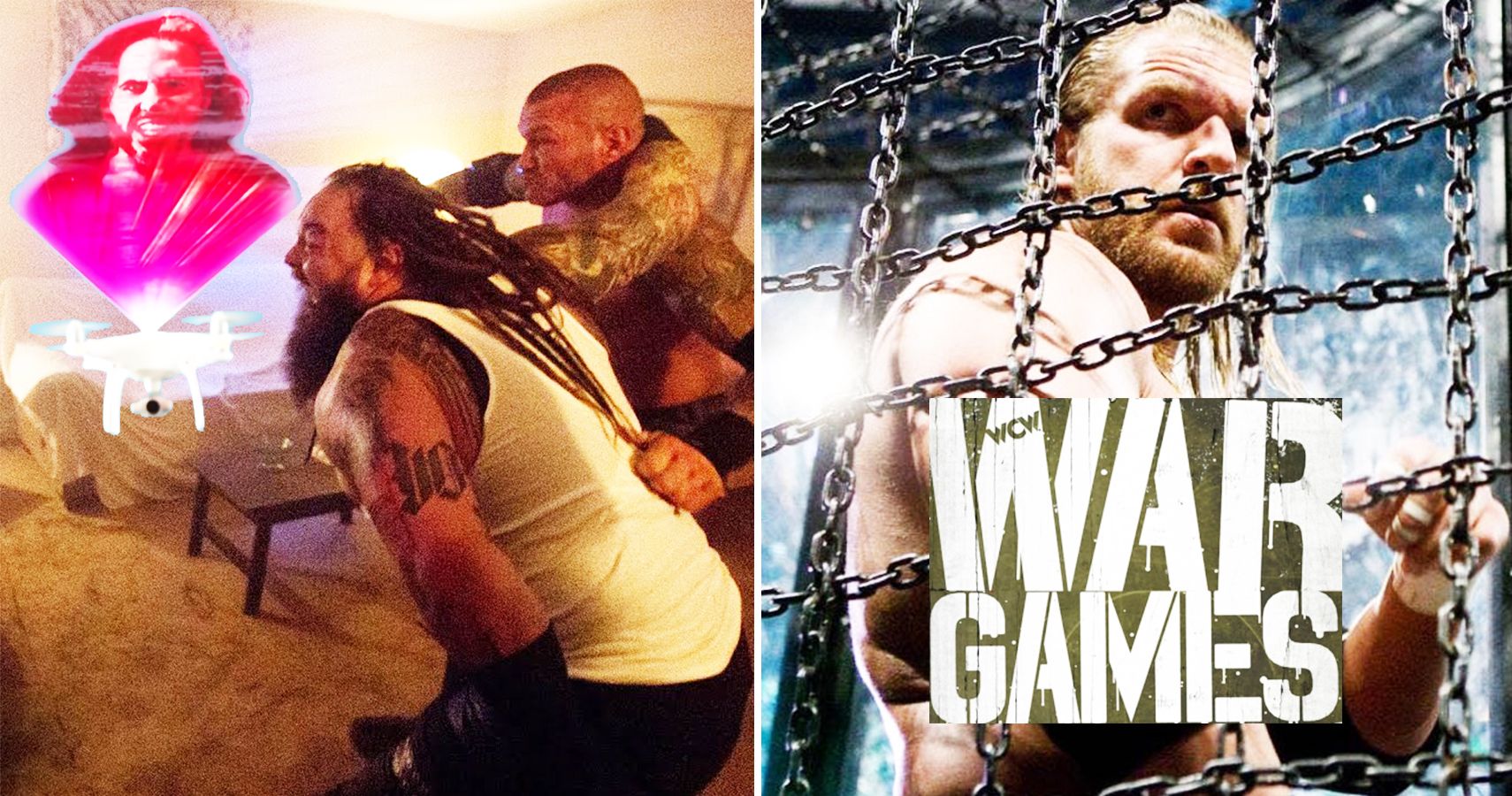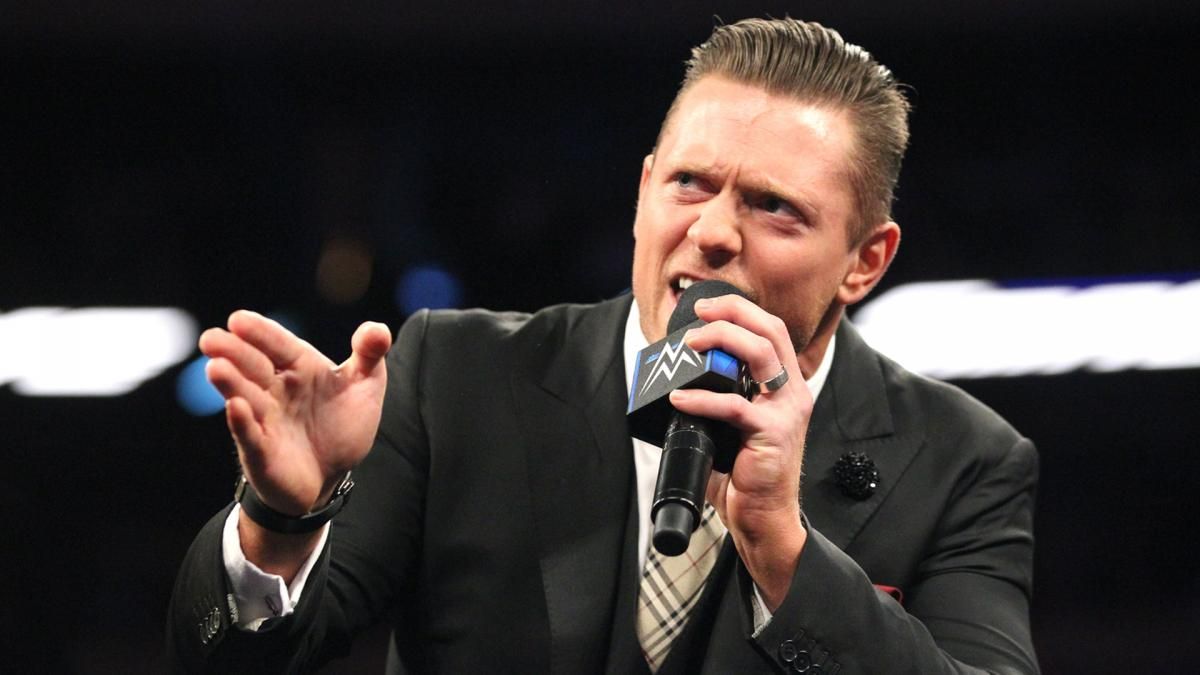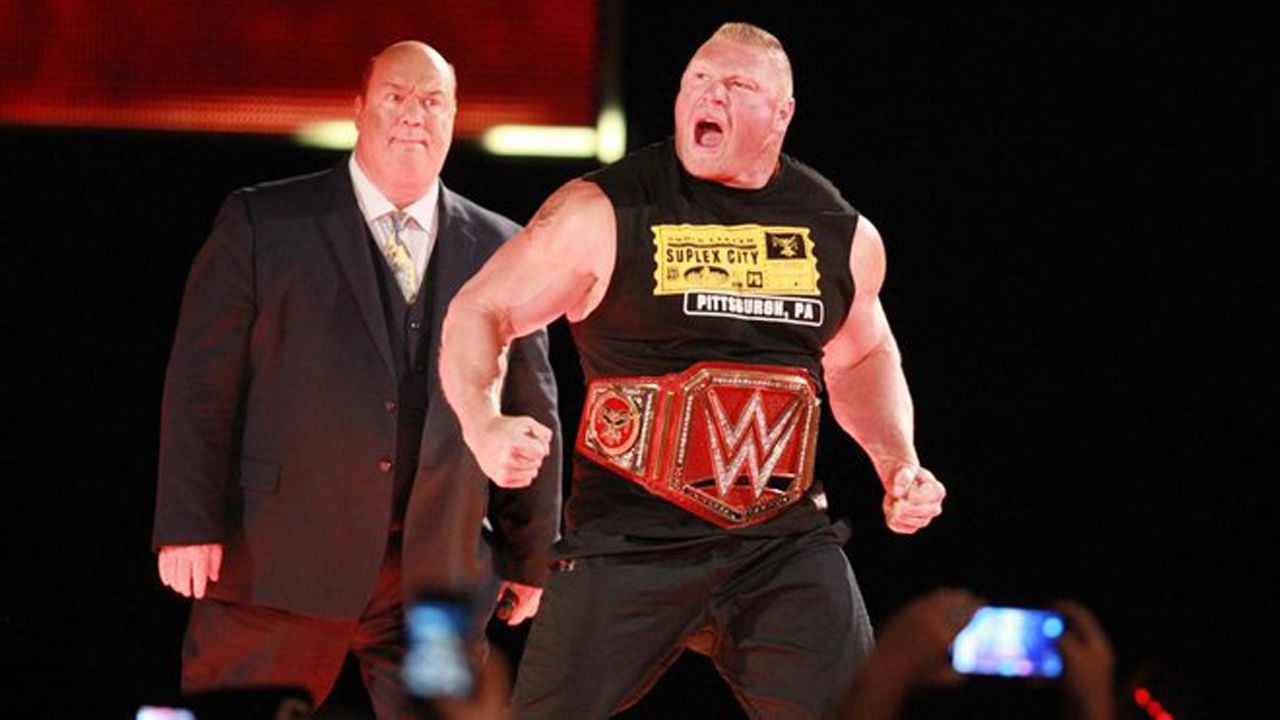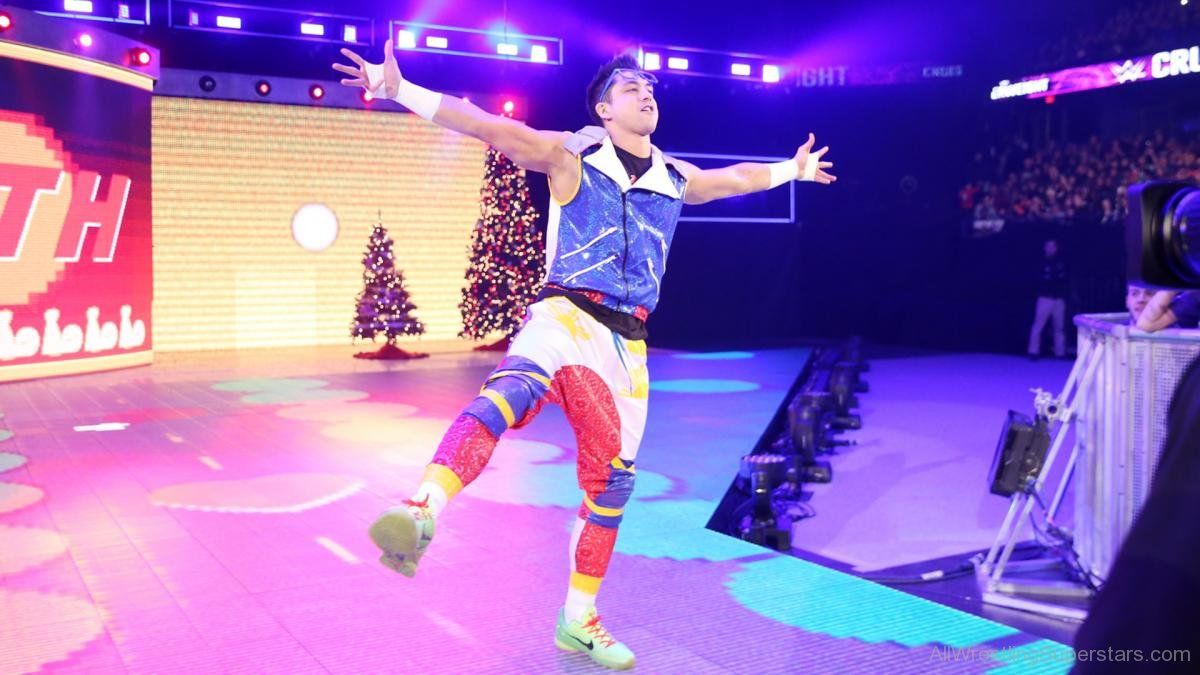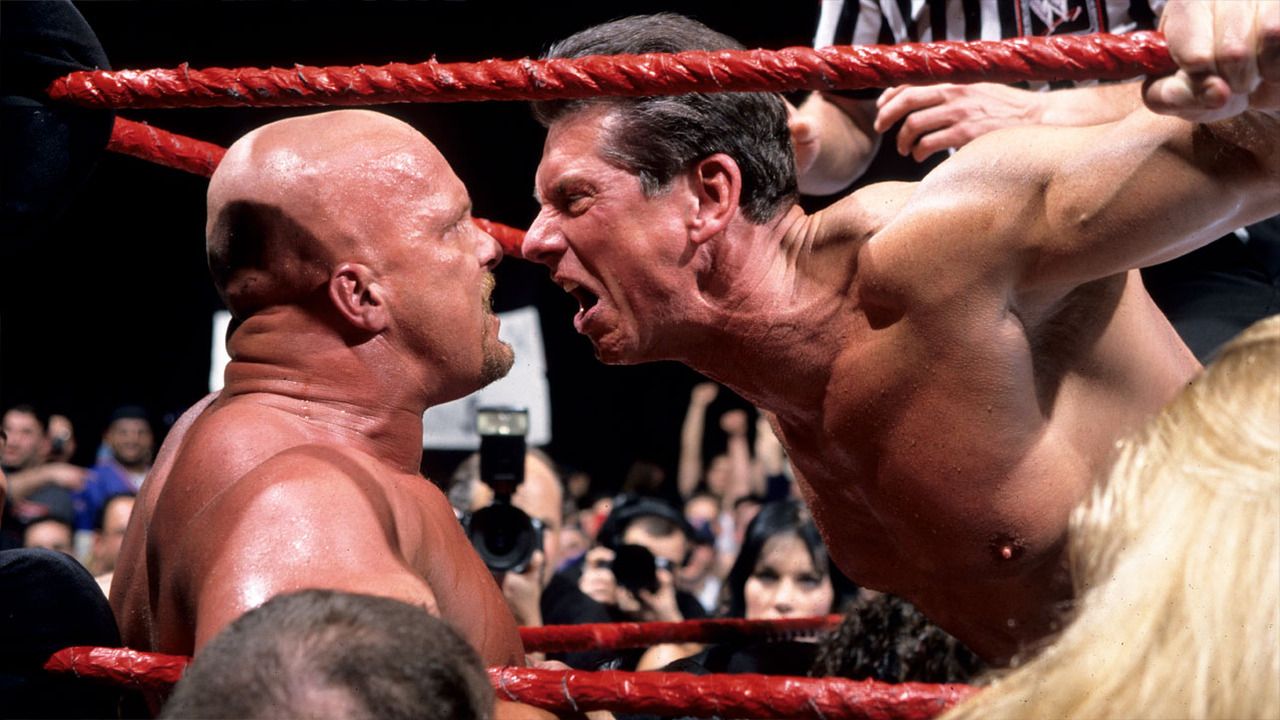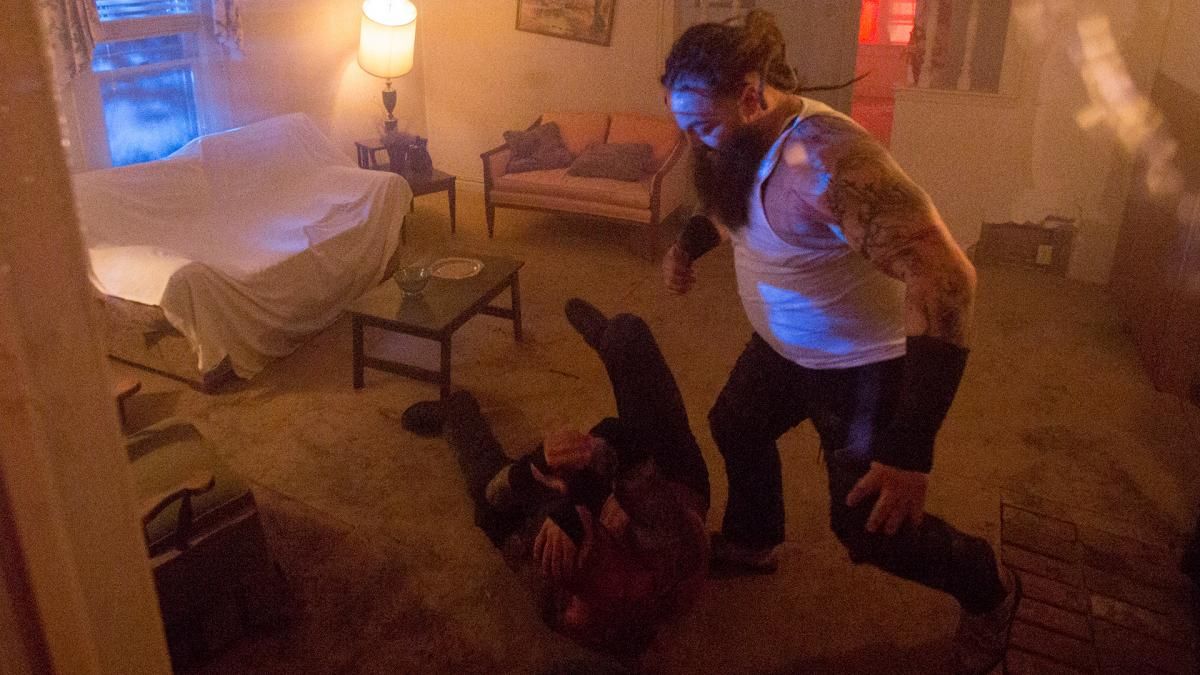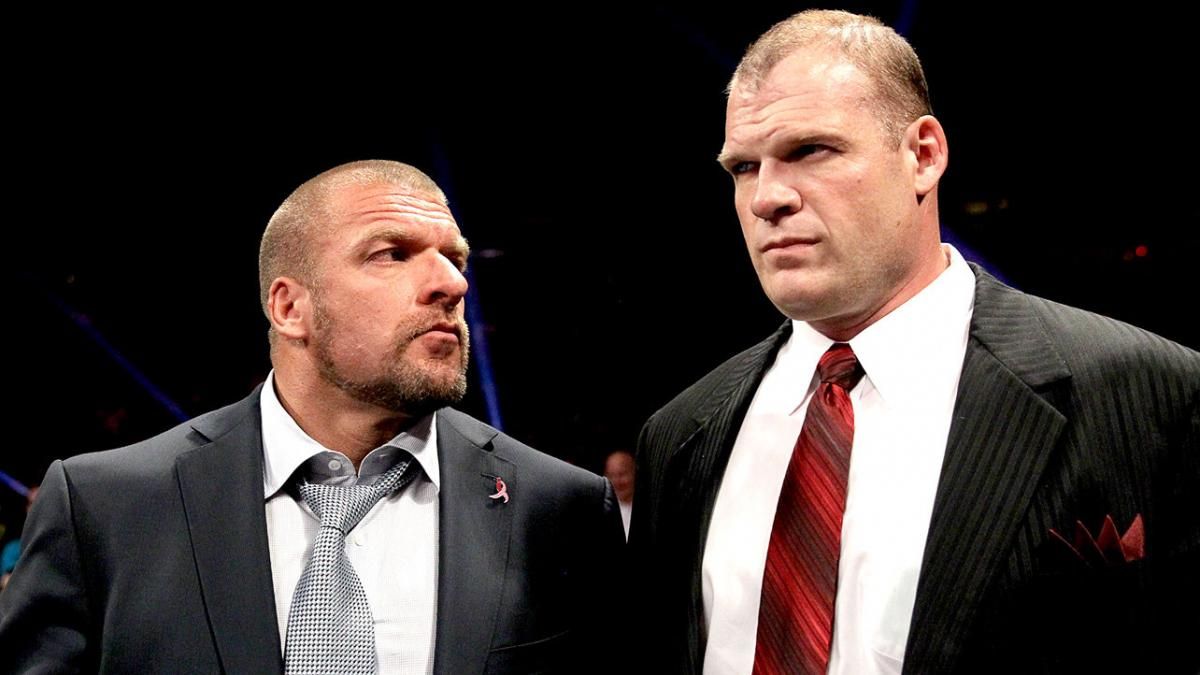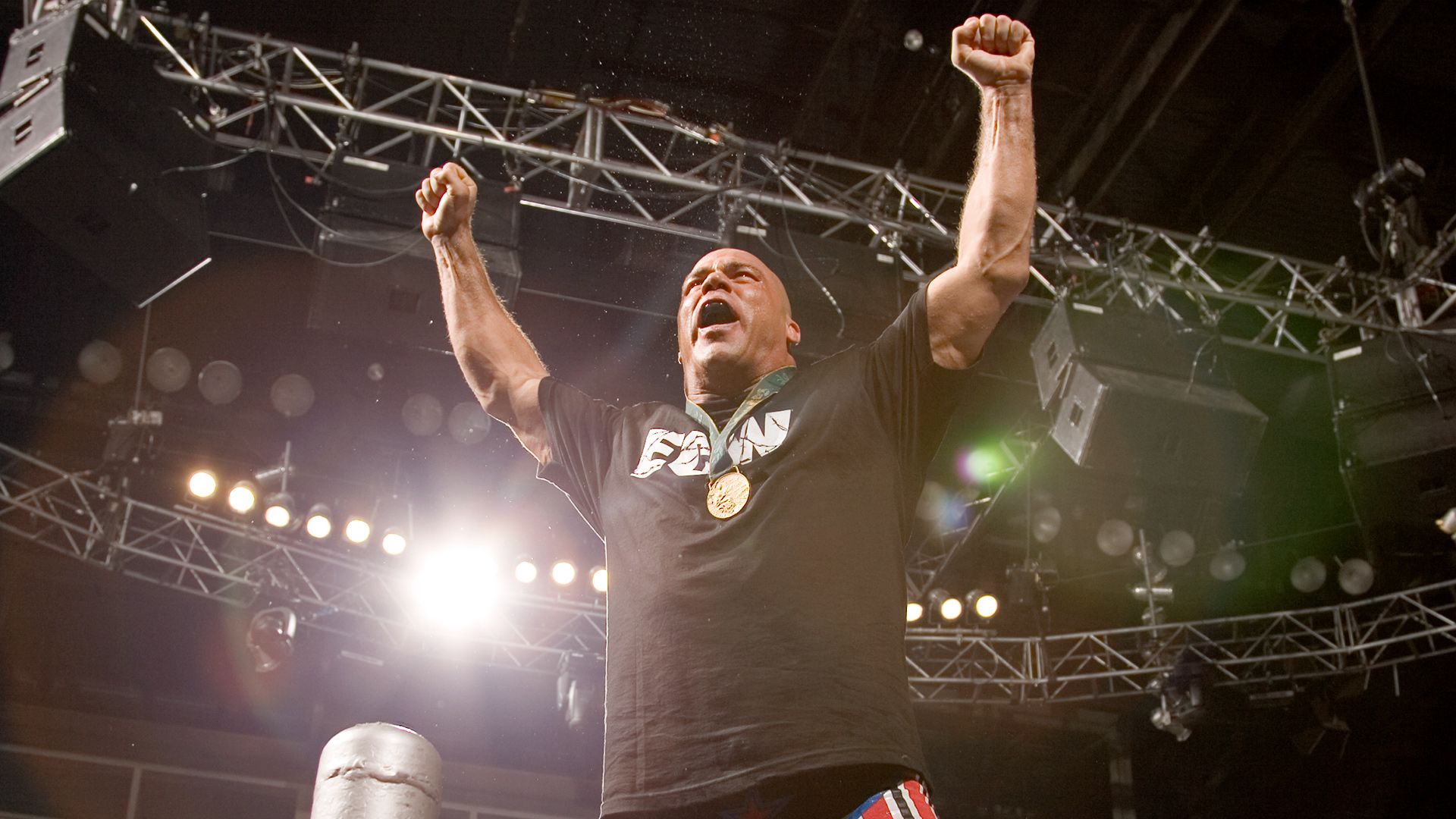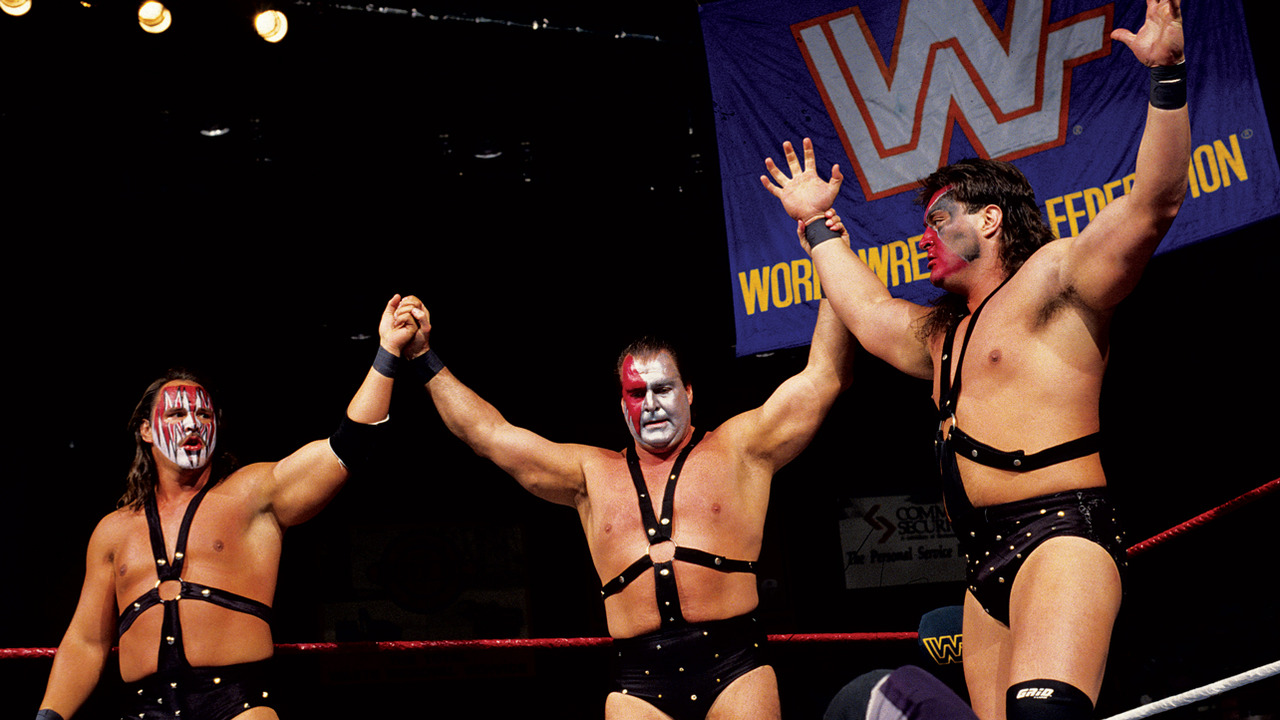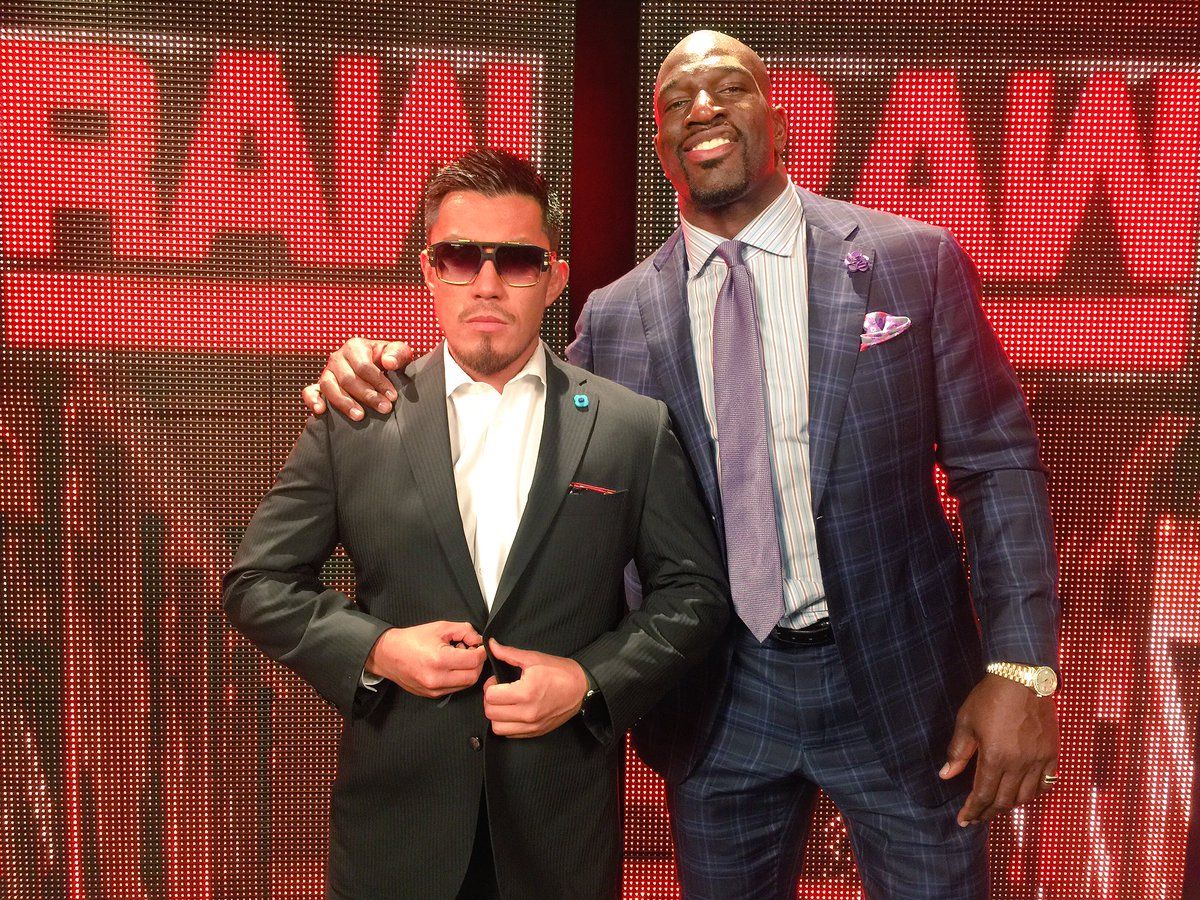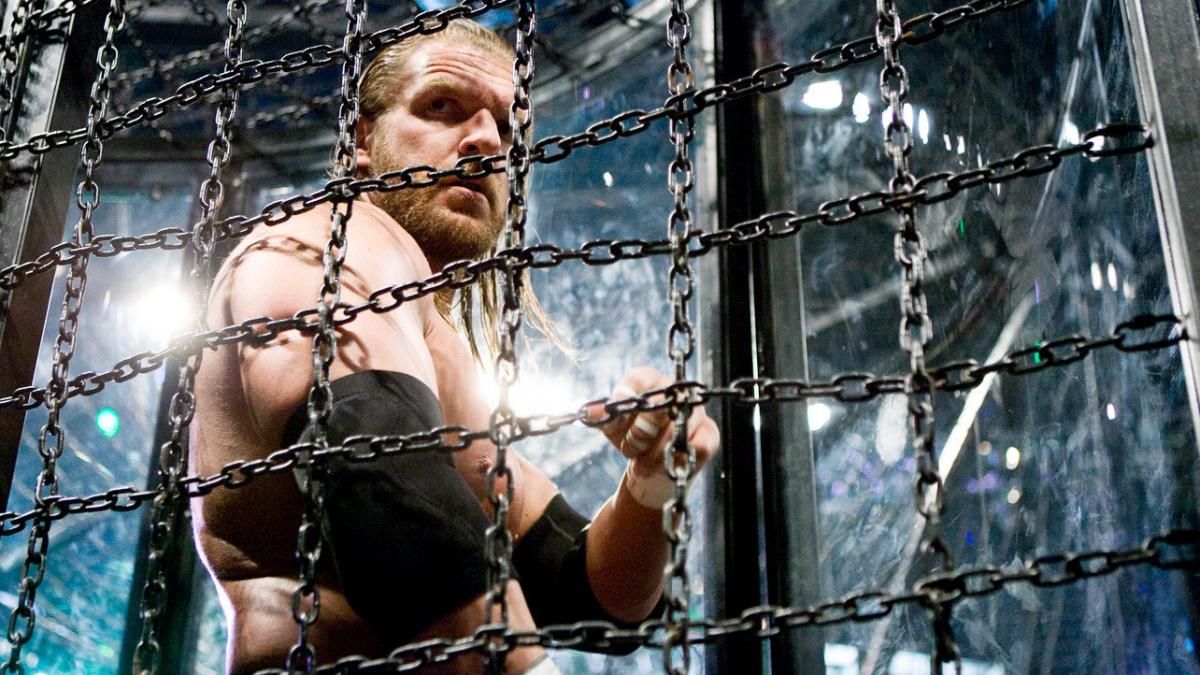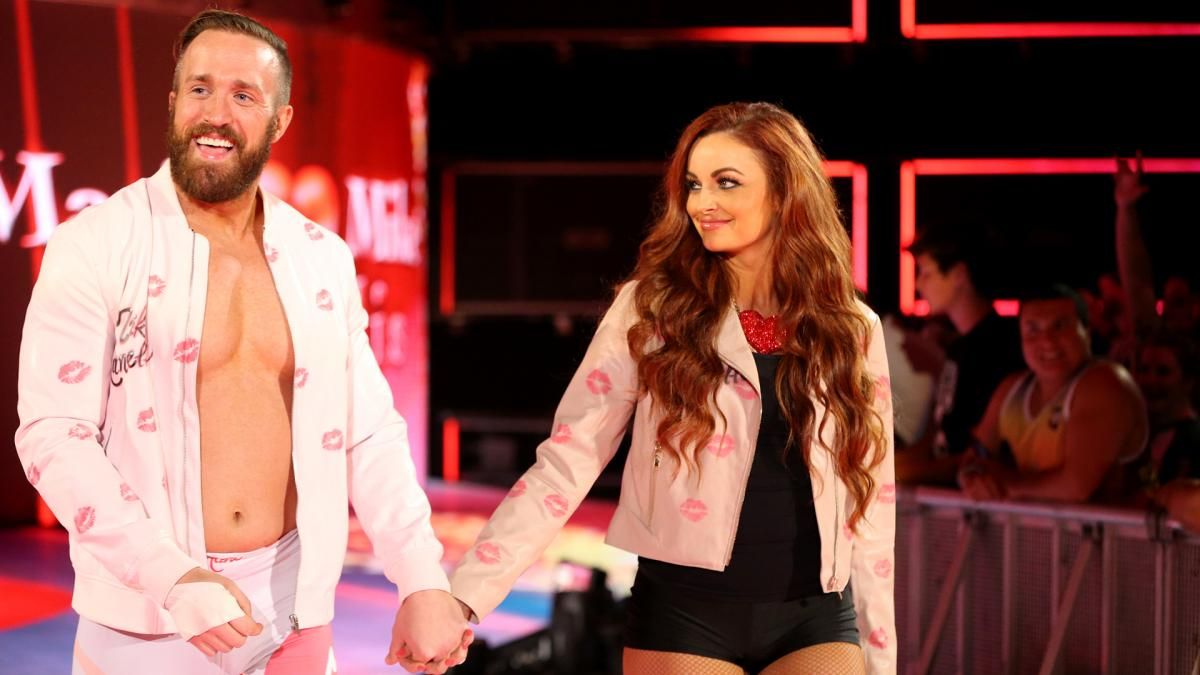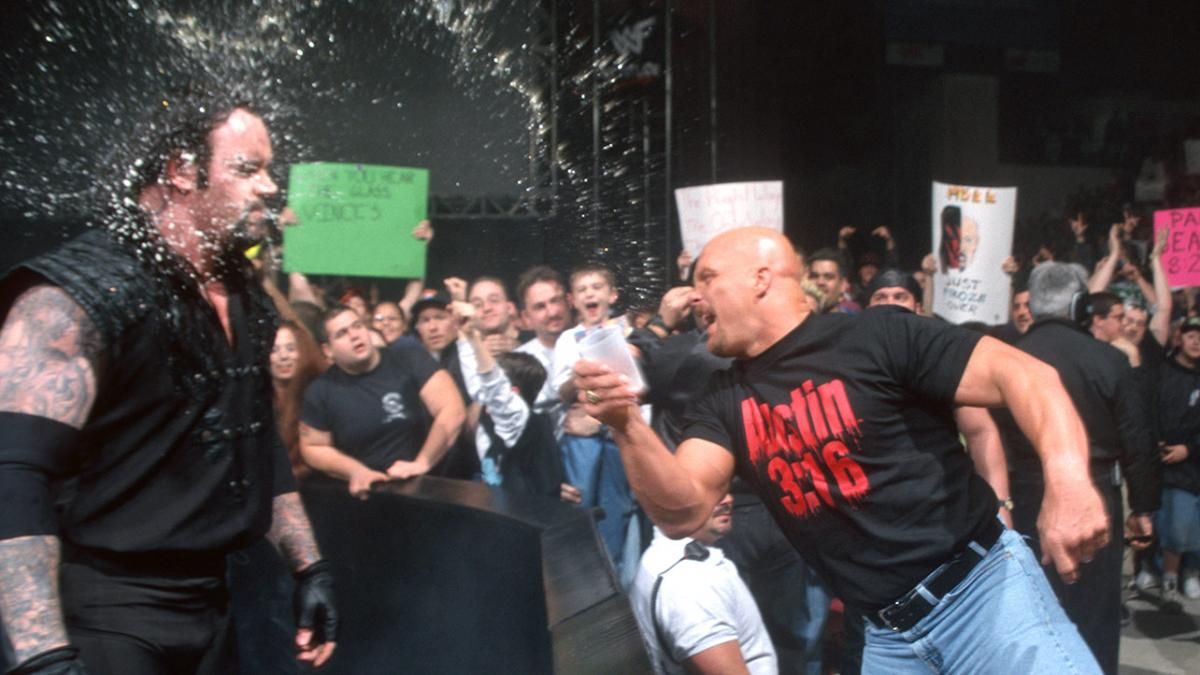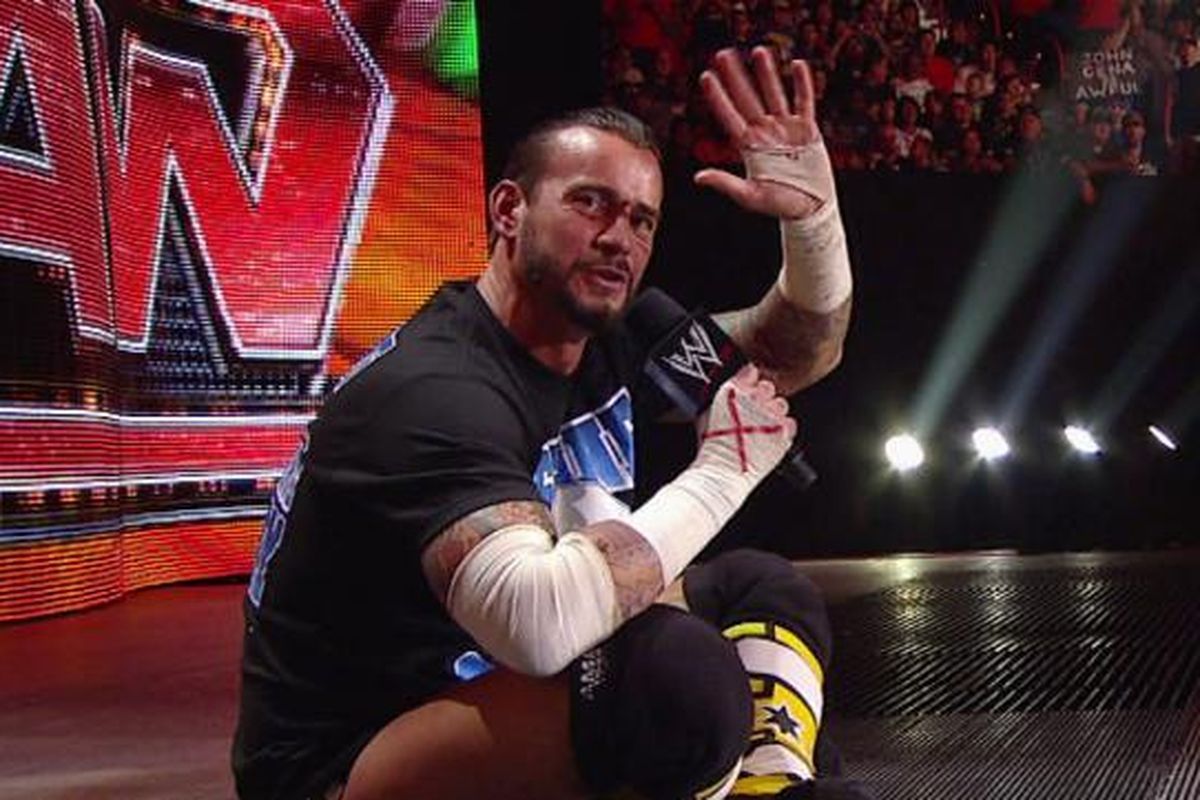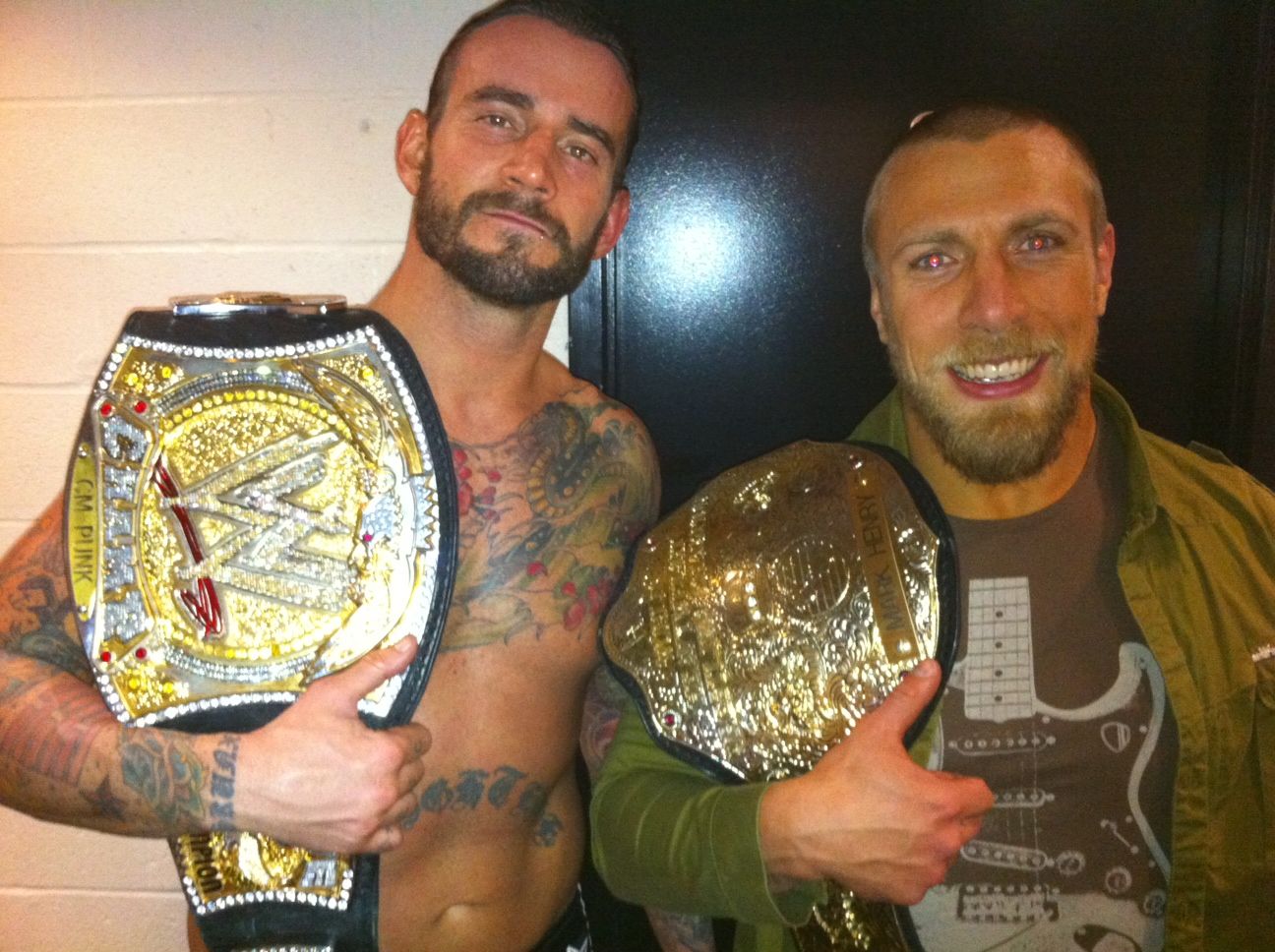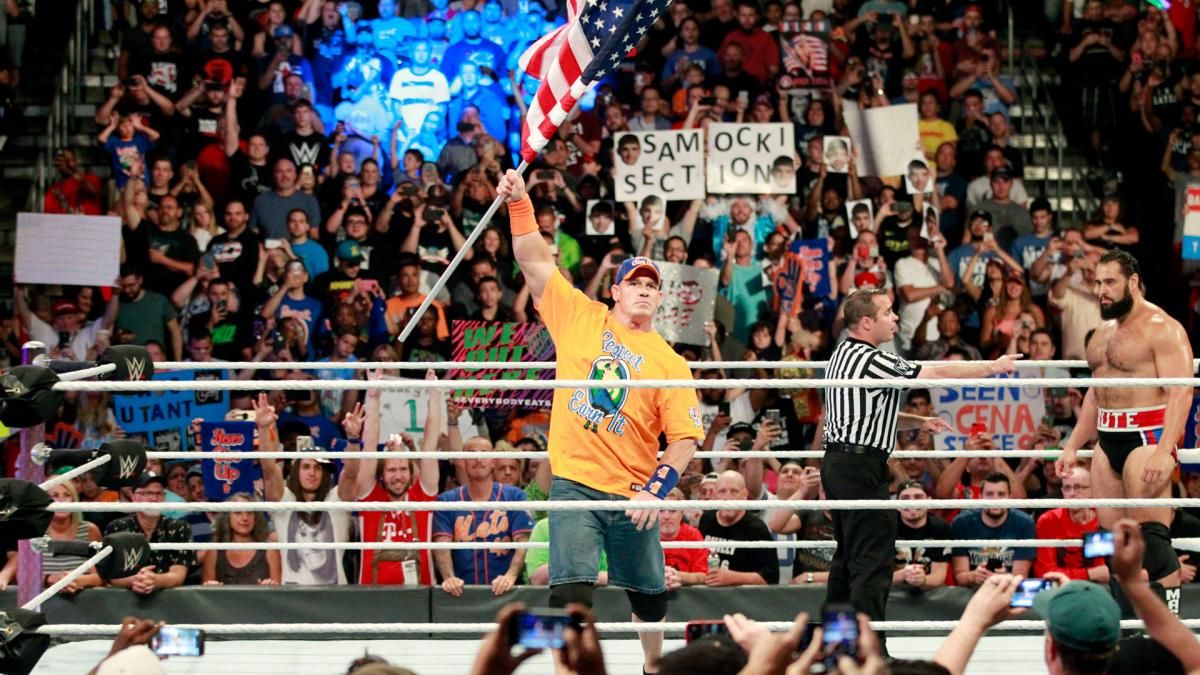It’s been said that there are a finite number of stories in existence, and that rather than telling new stories, creative types instead only new ways of telling them. This may well be true in all manner of art forms, and not least of all in professional wrestling. As Kevin Nash discussed it in his visit to Legends with JBL for the WWE Network, bookers can plot feuds around titles, around youngsters challenging their mentors, around one wrestler stealing another’s girlfriend. Surely, this is oversimplifying, but just as surely, it’s not so surprising that we see stories repeated, or stories even seem to rip off one another with new players in old positions.
WWE is the biggest wrestling company in the world, so it’s always a bit of a surprise when they feel the need to steal from others. Sometimes, WWE polishes things up, throwing bigger money and better resources behind an idea we’ve seen used to middling effect before. Sometimes we’ve seen WWE at its worst with lazy, or ill-informed booking taking a fine idea and turning into the worst version of itself.
So when has WWE taken ideas and made them better? And when have they taken perfectly good ideas and fouled them up by putting their own creative spin or own talents on them? This article takes a look back at eight times when WWE borrowed an idea from elsewhere and wound up ruining it, plus seven times when they took an idea and wound up making it even better.
15 15. Ruined: The Miz Making Empty Challenges
Ripped Off: Chris Jericho WCW Angle
After taking up residence in the lower card, and then the tag team ranks, The Miz enjoyed some real career advancement in 2009. The first glimmers of him moving up the card saw his character insisting that he was feuding with John Cena. While The Miz was still squarely several rungs lower on the WWE ladder, he made a habit of challenging Cena when he knew Cena wasn’t actually in the building, and claiming victory via forfeit when Cena didn’t answer his challenge.
While this angle was fine enough for giving Miz some extra heat, it directly imitated an angle Chris Jericho had run in WCW, calling out Goldberg for matches that he wasn’t around to actually work. Some might argue Cena-Miz was better for actually having a proper resolution in the form of two matches. The Miz was so soundly dominated, however—particularly in their PPV match at The Bash—that it arguably set him back and defeated the purpose of the program.
14 14. Improved: Monday Night Raw, Live Every Week
Ripped Off: WCW Going Live
After years of pre-taping everything but its PPV shows and the very occasional TV special, in 1993 WWE started airing live TV relatively regularly with the new Monday Night Raw show. They still taped a fair bit though, typically airing one episode live and taping the next so that the show was often in the can for a week or so before it made TV.
This model worked well enough pre-Internet and without competition, but in 1995, WCW launched Monday Nitro to enter direct competition with WWE, and they were live every week. The format allowed WCW to have a more immediately fresh and unpredictable product, besides getting into the mean-spirited habit of spoiling WWE’s results when their show wasn’t live.
To compete, WWE ended up transitioning to weekly live shows. Even after winning the Monday Night War, WWE mostly stuck to airing live on Mondays, to produce a show that has now survived and largely thrived for over twenty-four years.
13 13. Ruined: The Cruiserweight Division
Ripped Off: WCW's Cruiserweight Division
In the early 1990s, WCW took strides toward revolutionizing the American professional wrestling business by launching its light heavyweight division, featuring matchups like Brian Pillman vs. Jushin Liger. Later in the 1990s, WCW refocused on the cruiserweights by drawing in talents like Eddie Guerrero, Rey Mysterio Jr., Dean Malenko, Chris Benoit, Billy Kidman, Juventud Guerrera, and a bevy of others. This was WCW committing to not just a few stars but a legitimate division. You can argue the company marginalized its cruiserweights by rarely letting them break through in the heavyweights ranks or get a shot at the main event. Nonetheless, they did let their smaller wrestlers demonstrate their athleticism and bring a largely innovative style to US audiences, the ripples of which are still being felt much higher in the card today.
WWE has on multiple occasions tried to recapture the old cruiserweight magic, but their attempts have had a tendency stagnate with wrestlers who happen to be smaller working a heavyweight style, and thus failing to get over. Things looked to be taking a turn for the better with the Cruiserweight Classic on the WWE Network. The division to follow, however, has largely floundered in the absence of well defined characters or meaningful storylines, beyond smaller guys executing cool moves.
12 12. Made Better: The Heel Authority Figure
Ripped Off: Eric Bischoff Turning Heel, Joining the nWo
Wrestling has seen hints of the heel authority figure throughout time, but mainstream US wrestling tended to have their matchmakers and kayfabe presidents serve mostly off screen roles and only show up to announce the occasional big decision. When these guys did show up, it was usually as neutral parties, or to directly favor a babyface.
In 1996, amidst the New World Order storyline, WCW tried something new by having real life executive Eric Bischoff turn into a heel character who worked for the nWo. As a slimy heel, he got over and got more heat for the wrestlers he was backing. Vince McMahon would ultimately follow suit.
Mr. McMahon gave his megalomaniacal heel act a test spin in Memphis years earlier when he sent talent from WWE down to help out Jerry Lawler. On a national stage, he really committed to the bit, becoming the definitive heel authority figure. Backed by real life credibility, an impressive physique, and terrific character work, the guy was a magnetic on air personality who built off of what Bischoff had started to wind up on the short list for greatest wrestling heels of all time.
11 11. Ruined: The Off-Site Match
Ripped Off: Matches From The Hardy Compound
The Hardy Boyz reinvented themselves toward their end of their time away from WWE, spending over a year culling the Broken persona. Through it, Matt spoke in funny accents, the two stretched the limits of believability time and again, and they most infamously of all staged matches for TNA from the Hardy Compound.
Matches from the Hardy Compound included drones shooting lasers, and the Hardys shooting off fireworks at their foes. Even more absurd, their was the Lake of Reincarnation which transformed wrestlers into earlier gimmicks they had played. It was all silly, fun, and, for those who bought in, wildly entertaining.
While the connections are not entirely overt, it’s widely suspected that the Hardys’ work inspired WWE to have an off-site televised brawl between The Wyatt Family and New Day that was not particularly well received. From there, the was a match between Bray Wyatt and Randy Orton at Wyatt’s House of Horrors. This match was even worse as a joyless, largely nonsensical brawl, proving that WWE simply didn’t know how to capitalize on or recreate the Hardys’ style of Broken Brilliance.
10 10. Made Better: Kane As Dr. Jeckyl And Mr. Hyde
Ripped Off: Abyss's Splitting Personalities
Kane has spent most of his WWE tenure playing a character that is mentally unstable, and it’s widely hypothesized that his character arc was an inspiration for that of Abyss in TNA. However, Abyss diverged when he began playing a split personality gimmick, dividing his time between being a monster, and playing mild-mannered, nerdy Joseph Parks.
Turn about may be fair play, as Kane worked a closely related gimmick, splitting time between playing Corporate Kane, a suit-wearing sidekick to The Authority, and The Demon Kane, as his old masked and monstrous self. While Kane had no real business main eventing in 2015, the gimmick was fun enough to forget about in ring skill, as he alternated being terrorized by, and in turn terrorizing Seth Rollins. It was some of Kane’s very best character work, taking what Abyss had done and making it his own to wildly entertaining effect.
9 9. Ruined: The ECW Brand
Ripped Off: ECW
It’s rare for an entire wrestling company to get over to the extent that fans will chant its initials as readily as they’ll cheer any individual performer. Such was the case for ECW in its heyday, as fans embraced Paul Heyman’s wild, violent, and creative vision, with stars like Rob Van Dam, Sabu, Taz, and Tommy Dreamer at the fore.
It’s sensible enough that WWE would try to cash in on ECW’s legacy after it bought out the company. The One Night Stand shows of 2005 and 2006 were excellent demonstrations of how to capitalize on nostalgia and create something entertaining and lucrative on a short term basis. Unfortunately, WWE decided to lean into the idea full tilt, and wound up launching ECW as its own full time brand.
WWE’s ECW was a bastardization of the original concept. At its best, it did give a platform to newer stars, still trying to prove themselves like CM Punk. Unfortunately, the brand also suffered from plugging in establishment WWE guys in top spots, including The Big Show having the promotion’s first dominant world title reign. Soon, fans recognized the ECW they loved was gone forever, and WWE’s version left a lot of tarnished memories in its wake.
8 8. Made Better: The Concept Of The Road Warriors
Ripped Off: The Road Warriors' face-painted tag team gimmick
In the 1980s, The Road Warriors emerged as the most captivating tag team in wrestling. With their bulging muscles, their mohawks, their spiked shoulder pads, and their face paint, Hawk and Animal were an irresistible attraction that tore through different territories.
WWE at the time wanted the best of everything, and that included tag teams in this very specific mold. So, they created Demolition—Ax and Smash as face-painted monster heels who wore black attire with littler spikes on it, and effectively worked the same persona as The Road Warriors.
While Demolition never broached the level of iconic figures that Hawk and Animal did, it’s an uncomfortable truth that they actually were the better in ring workers, capable of more than just mowing through the competition, but also selling, wrestling technically, and executing more complex tandem maneuvers. Sure, The Doomsday Device was one of the coolest finishers in wrestling, but it was also an incredibly reckless maneuver that put victims’ bodies at risk. Demolition was the safer, more stable unit, and WWE was ultimately better off for featuring their tag team during the company’s critical growth period.
7 7. Ruined: Titus Worldwide
Ripped Off: Famous B in Lucha Underground
Titus Worldwide is a strange gimmick for Titus O’Neil. On one hand, it capitalizes on the wrestler’s skills. He’s not very good at all as an in ring worker, but he is a good talker with infectious enthusiasm. On the other hand, situating him as ostensibly a heel manager backing mostly face acts (at this point, Apollo Crews and Akira Tozawa) feels like a very odd fit, not to mention that it’s a bit awkward for the manager to physically dwarf his wrestlers. The greatest shortcoming of the gimmick, of course, is that at this point it also feels like a dead end with on one involved really making meaningful progress, and least of all on account of the angle.
The angle makes some more sense when you consider it in the context of a Famous B knockoff. Famous B is a smaller wrestler who works for Lucha Underground, and moved away from in ring performance, into a gimmick of a heel manager who promises to help get over other talents—mostly faces. African American guy with strong mic skills trying to get faces to let him manage them. There’s a lot of overlap there. Famous B’s shtick has largely been fun, if a bit ineffectual. Titus feels all the more directionless, and not particularly entertaining to date.
6 6. Made Better: The Elimination Chamber
Ripped Off: War Games
War Games was a brutal and fun part of WCW history. The company broke out the gimmick with its double cage more or less annually for a wild brawl between two teams with staggered entries, and the promise of a violent submission or surrender finish. By the end of WCW’s run, the War Games gimmick, too, had more or less run its course as the company tried to find ways to modernize it and largely bastardized the concept with rule modifications.
Triple H is a student of wrestling history and reportedly advocated for WWE to reintroduce War Games. Instead, the company went with a match inspired by the concept, including brutality and staggered entries, but without the burden of teams or any especially convoluted rules. While Elimination Chamber isn’t a direct rip off of War Games, and it’s debatable if it’s better, it is certainly a more modernized take on many of the principles of War Games that has become an enjoyable recurring part of the fabric of WWE programming.
5 5. Ruined: The First Lady Of WWE
Ripped Off: Miss Elizabeth As The First Lady
Maria Kanellis rose to fame as a part of WWE, but you can make a real argument that she didn’t really come into her own until she headed off for rockier waters. She wound up with her real life and on screen hubby Mike Bennett/Kanellis. While her WWE persona was mostly that of a ditzy beauty, on the indies she developed a heel persona that made her a much better manager and better rounded attraction with game on the mic and the ability to help her charges get over.
Kanellis billed herself as the First Lady of ROH, and then the First Lady of TNA. The gimmick bled over into WWE when she and Mike made their way back to the company this summer. Their power of love gimmick was largely cartoonish, but billing herself as the First Lady of WWE felt particularly laughable, even for a heel performer just trying to get heat, because the company had evolved on women so much, and Kanellis was so clearly not the best at anything on the roster. Case in point, the couple began to flounder soon, dropping matches to Sami Zayn and quickly moving from new upper mid-card threat to non-factor. On Smackdown.
4 4. Made Better: The Attitude Era
Ripped Off: The ECW Brand
As referenced earlier, WWE would ultimately try to relaunch its own version of ECW. Even before that, however, the bigger company would steal key elements of what made ECW successful, including pitching its performers as real people, and booking around deeply personal issues. That also included getting more hardcore with bloodshed, weapons, and wild brawling into the crowd.
Today, fans recognize all of these elements as signature pieces of WWE’s Attitude Era. Indeed, WWE borrowed what it needed from ECW to create an edgier, more provocative product, added their own polish, top talent, and the restraint of a billion dollar corporation, and wound up with one of the most successful periods in pro wrestling history. Sure, some folks still prefer the original, but WWE’s spin on Attitude, hardcore, and the extreme crossed over to become an undeniable media success.
3 3. Ruined: The Summer Of Punk
Ripped Off: CM Punk Leaving ROH
When CM Punk left ROH for WWE, he pitched one of the most elaborate, and most successful worked shoot angles of all time. It started with him challenging ROH Champion Austin Aries for the title in what was considered to be his last match with the company. Many assumed it would be one last great performance from Punk before he headed of for bigger things; the general consensus was that he would lose in the process to put over Aries and, of course, not leave with the company’s top title.
But Punk won.
Punk won, cut a scathing program against all of ROH, and launched a hot summer angle of the roster’s top stars chasing him to win back the title before he brought it along with him to WWE. It was a huge creative success—huge enough that WWE elected to rip it off when Punk’s WWE contract was set to expire in 2011.
Punk delivered the Pipebomb promo to get people’s attention, and would go on to defeat John Cena for the WWE Championship in front of a hometown crowd at the Money in the Bank PPV, in what was billed as his last WWE match. So far so good, as Punk got more over in that month span than he ever had been before. However, Punk would disappear for a few weeks only to come back and continue the feud with Cena. While he would defeat Cena, he would quickly drop the title to Alberto Del Rio. And while Punk’s stock had risen, he also quickly felt like just another WWE main eventer, losing what was special about him as he got tied up in a feud that went nowhere with Kevin Nash and Triple H.
2 2. Made Better: Having Two World Champions
Ripped Off: WCW Crowning Two Champions
In the early 1990s, WCW ran into a conundrum in its relationship with the National Wrestling Alliance. The upshot was having two world titles—the WCW Championship, a relatively new world title, and the International Championship, essentially following the lineage of the NWA Championship. The whole situation was largely confusing to casual fans and, of historical importance, muddied the waters as to Ric Flair’s true world title reign count.
WWE briefly had both the WWE Championship and WCW Championship running as world titles after the company bought out WCW, but would ultimately unify the two. Inside of a year. The company would twice more meaningfully separate things out, however, to have two concurrent world titles, ostensibly equal in value. Each run of two titles coincided with a brand split, having one top title for Raw and one for SmackDown.
While this model did break down as the first brand split eroded, it was successful then and is successful now for keeping the shows separate and distinctive, each with its own top prize for the respective rosters to pursue. This all makes a great deal more sense than just having two world titles appear on the same show.
1 1. Ruined: The Patriotic Summer PPV
Ripped Off: The Great American Bash
After one Great American Bash show, Jim Crockett Promotions launched the Great American Bash franchise as a summer tour to loosely brand its show around the Independence Day holiday. The Bash would return to running as a stand alone show and one of the territory’s most celebrated throughout the late 1980s and through the transition to branding as WCW, then through that company’s existence. While the Great American Bash wasn’t always great, it held its own as a staple on the WCW calendar.
After WWE bought out WCW, the company decided to begin running its own annual Great American Bash, which was largely a B-PPV with little in the way of significant history. They eventually simplified the name of the event to just The Bash, before letting it go altogether as a franchise that sounded old fashioned and that the company never did much of meaning with.
We saw WWE take another stab at a more patriotic July PPV in 2017 with Battleground. With war overtones in check, the show featured its top two matches of Randy Orton trying to win back the WWE Championship from Indian heel Jinder Mahal in a Punjabi Prison Match, and John Cena squaring off with Rusev in an all the more overt Flag Match. Unfortunately both matches were complete flops, leaving a bad taste in the mouths of fans as a show that felt misguided and oddly dated for forcing tensions between the US and curious heel threats from places the US doesn’t really have tensions with. When was the last time you heard about the US and Bulgaria being sworn enemies?

